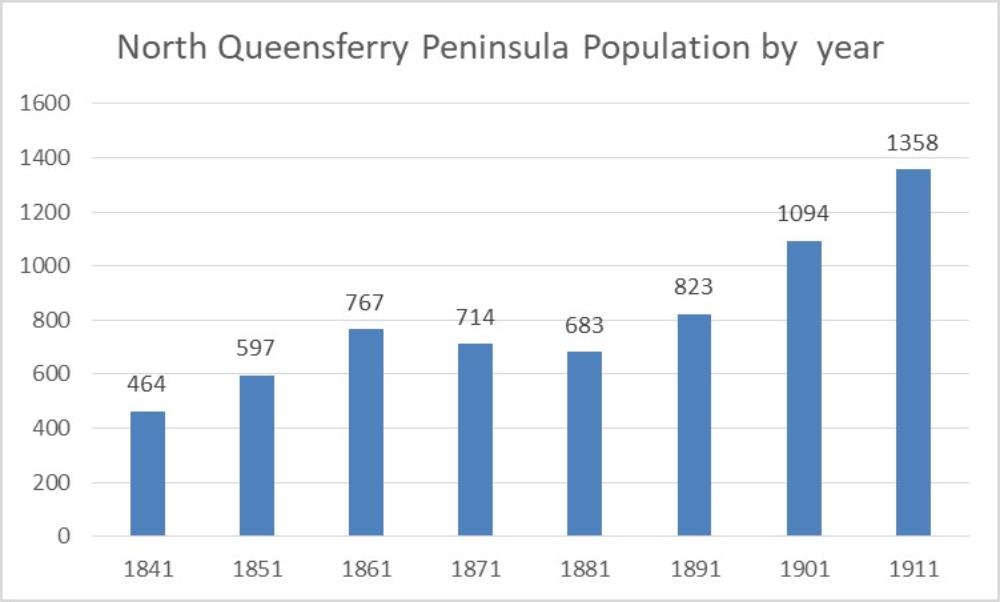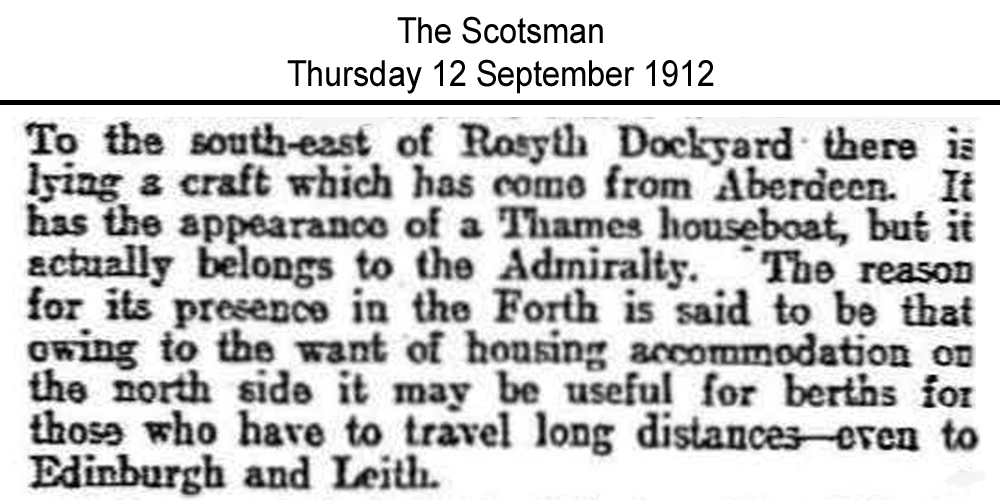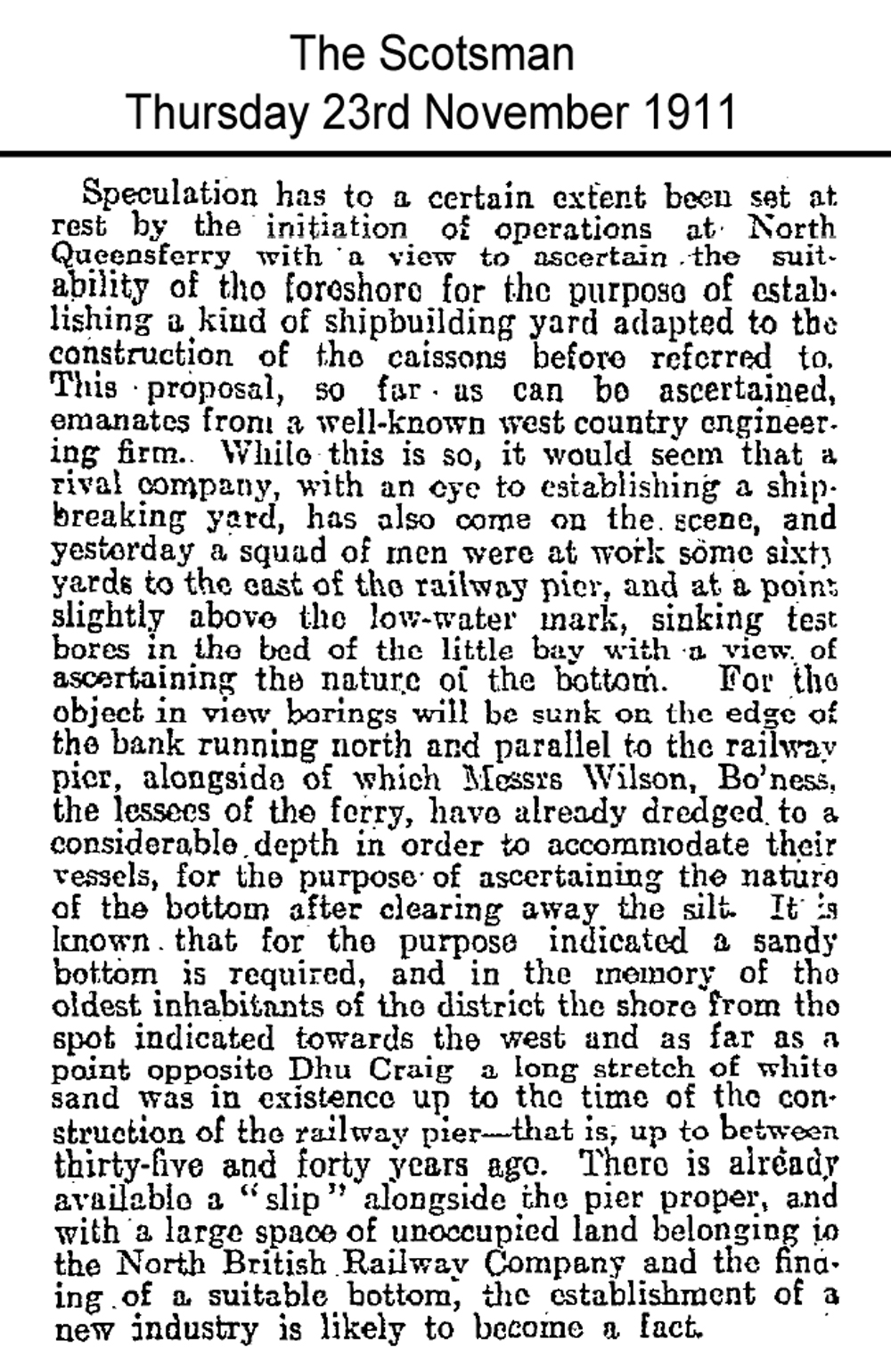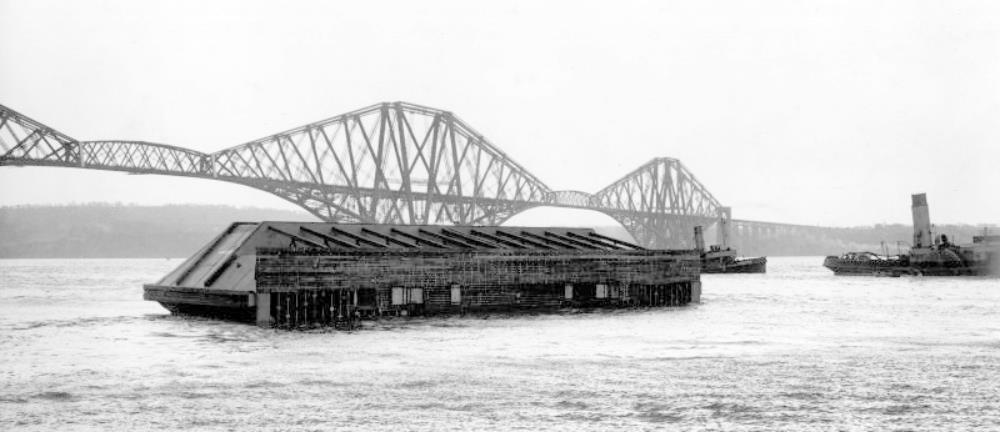Rosyth Dockyard – Links with North Queensferry
| < Index | Δ Index | 2 – A Brief History of Rosyth Dockyard > |
 Rosyth Dockyard from North Queensferry in 1922
Rosyth Dockyard from North Queensferry in 1922
The creation of Rosyth Dockyard had a huge impact on the local landscape and seascape. Its creation led to the gradual formation of St Margaret’s Marsh, now a Site of Special Scientific Interest.
The construction project brought a huge influx of people to the village from humble navvies to top civil engineers, and some of the key components of the dockyard were manufactured in North Queensferry.
The dockyard workers and sailors from Rosyth have been a feature of life in North Queensferry for more than a century.
Impact on the Landscape
Apart from the fact that the dockyard was built more or less on our doorstep, dominating the view up river, it involved a huge amount of land reclamation. All of the dockyard facilities were built on reclaimed land, and some the spoil from dredging of the approach channels was used to infill St Margaret’s Bay, creating St Margaret’s Marsh.
Impact on Village Life
The creation of the dockyard had a huge impact on village life.

This chart shows how the population of North Queensferry peninsula (North Queensferry, Cruickness and Jamestown) grew each census year. The jump in 1901, was probably the aftermath of the construction of the Forth Bridge, while the jump in 1911 was definitely caused by Rosyth Dockyard.
The 1911 census, for the first time, noted where each individual was employed.
There were 20 men working on the Forth Bridge – all but one were incomers. Many of them were settled with families adding a further 42 to the population growth.
The dockyard accounted for 354 individuals. 174 were workers and 180 were dependents. Most of these came from outside Fife, a huge growth in population. Many of the navvies were housed in the custom-built Naval Mansions in Jamestown, while the large number of Irish navvies let to the naming of Shamrock Terrace.
Prior to this, workers had been housed on the hulk of a ship moored off Rosyth.

Military personnel
There was also an influx of 30 soldiers, all from England with a further 20 dependents. These were from the Royal Engineers and the Royal Garrison Artillery – manning the searchlights and batteries at Carlingnose, the Coastguard Station and on Inchgarvie. These were created to protect the estuary and were now ideally situated to protect the new naval base and dockyard.
Civil Engineers
As well as the many dockyard navvies, most living on Jamestown, there were also six civil engineers living in some of the larger houses in North Queensferry.
| Alexander Macdonald | InchView Villas |
| Luke H. Larmuth | Bankton Cottage |
| Thomas G. Menzies | Ferry Craig |
| George M. Halden | Craig Forth |
| Thomas B. Hunter | Sycamore Bank |
| Arthur L. Bell | Drumcarling |
Thomas Briggs Hunter, C.B., O.B.E., was born on 15 July, 1873, died on 2 October, 1957.
He entered Admiralty service at Devonport as an Assistant Civil Engineer on 3 November, 1896, and subsequently served at Gibraltar and Rosyth before joining the Admiralty Head Office. He was promoted to Superintending Civil Engineer in 1918, to Assistant Civil Engineer-in-Chief in 1924, and the following year to Deputy Civil Engineer-in-Chief before his final promotion to Civil Engineer-in-Chief on 1 September, 1932. During his service with the Admiralty Mr Hunter acquired a specialized knowledge of all harbour works and dock engineering together with a wide experience of all the requirements of the Royal Navy connected with his profession. He retired in 1934.
In 1926, he was the co-author with Arthur L. Bell of “Hunter and Bell on H.M. Dockyard, Rosyth” in the proceedings of the Institution of Civil Engineers. This paper was the major reference for this article.
Luke H. Larmuth is most probably Luke Hamilton Larmuth. I suspect he worked on the Forth Bridge. He specialized in wind-loading on structures, and became an expert on the design and erection of Airship Sheds.
Thomas Graham Menzies, Esq. Director of Special Construction, Civil Engineer in Chief’s Department, Admiralty, was awarded a CBE on 7th January 1919. He was jointly named on this 1912 patent for a method of extracting piles almost certainly based on his experiences at Rosyth. We know a little more about him because his daughter Phyllis Menzies sent Anne Monteith some photographs and a letter about her memories of living in North Queensferry at this time.
Caissons manufactured in North Queensferry

William Arrol and Co. of Forth Bridge fame were awarded the contract to supply the caissons (lock gates) and the basin sluices (water valves) for the Dockyard. There was limited construction space available at Rosyth – the entire site was submerged at high tide – so four of the massive caissons (they each weighed more than 900 tons) were built on slipways next to the Railway Pier, then launched and towed upstream to Rosyth.
 A floating caisson, lying on its side being towed from North Queensferry to Rosyth
A floating caisson, lying on its side being towed from North Queensferry to Rosyth
| < Index | Δ Index | 2 – A Brief History of Rosyth Dockyard > |